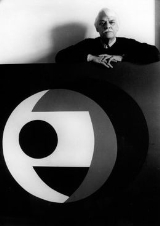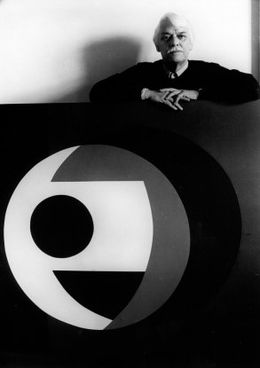
Thomas Nathaniel Davies
Encyclopedia

Welsh people
The Welsh people are an ethnic group and nation associated with Wales and the Welsh language.John Davies argues that the origin of the "Welsh nation" can be traced to the late 4th and early 5th centuries, following the Roman departure from Britain, although Brythonic Celtic languages seem to have...
artist and teacher, born in Dowlais
Dowlais
Dowlais is a village and community of the county borough of Merthyr Tydfil, in Wales. As of 2001, it has a population of 6646.Dowlais is notable within Wales and Britain for its historic association with ironworking; once employing, through the Dowlais Iron Company, roughly 5,000 people, the works...
, Merthyr Tydfil
Merthyr Tydfil
Merthyr Tydfil is a town in Wales, with a population of about 30,000. Although once the largest town in Wales, it is now ranked as the 15th largest urban area in Wales. It also gives its name to a county borough, which has a population of around 55,000. It is located in the historic county of...
, Wales. Shunning a promising early career with Cardiff City Football Club, he enrolled at Cardiff College of Art
Cardiff School of Art & Design
Cardiff School of Art & Design is one of the five schools that comprise Cardiff Metropolitan University .-About CSAD:...
in 1939, where he was taught and befriended by the painter Ceri Richards
Ceri Richards
-Biography:Richards was born in the village of Dunvant, near Swansea, the son of Thomas Coslett Richards and Sarah Richards . He and his younger brother and sister, Owen and Esther, were brought up in a highly cultured, working-class environment...
.
His studies were interrupted by the Second World War and he was called up for service with the Royal Corps of Signals
Royal Corps of Signals
The Royal Corps of Signals is one of the combat support arms of the British Army...
in North Africa
North African campaign
During the Second World War, the North African Campaign took place in North Africa from 10 June 1940 to 13 May 1943. It included campaigns fought in the Libyan and Egyptian deserts and in Morocco and Algeria and Tunisia .The campaign was fought between the Allies and Axis powers, many of whom had...
. On his return he taught for a brief period at the Royal College of Art
Royal College of Art
The Royal College of Art is an art school located in London, United Kingdom. It is the world’s only wholly postgraduate university of art and design, offering the degrees of Master of Arts , Master of Philosophy and Doctor of Philosophy...
where the sculptor John Skeaping
John Skeaping
John Rattenbury Skeaping, RA was an English sculptor and equine painter.Born in South Woodford, Essex, Skeaping studied at Goldsmith's College, London, and later at the Royal Academy. He was the first husband of the sculptor Barbara Hepworth, with whom he exhibited during the 1920s...
, a professor there, became a close friend. In 1945 he accepted a job at Newton Abbot
Newton Abbot
Newton Abbot is a market town and civil parish in the Teignbridge District of Devon, England on the River Teign, with a population of 23,580....
Art School, before later becoming the Head of Art at South Devon College
South Devon College
South Devon College is a large sized further education college providing a range of learning opportunities for the diverse communities within Torbay and the surrounding area...
, Torquay
Torquay
Torquay is a town in the unitary authority area of Torbay and ceremonial county of Devon, England. It lies south of Exeter along the A380 on the north of Torbay, north-east of Plymouth and adjoins the neighbouring town of Paignton on the west of the bay. Torquay’s population of 63,998 during the...
.
During this post-War period he produced paintings that reflected both his childhood in the grey iron town of Dowlais and the green landscape of his new life in Devon. It also marked an intense time of portrait painting, with influences ranging from Post-Impressionism
Post-Impressionism
Post-Impressionism is the term coined by the British artist and art critic Roger Fry in 1910 to describe the development of French art since Manet. Fry used the term when he organized the 1910 exhibition Manet and Post-Impressionism...
to Picasso. His self-portraits from this period also form a small but masterly body of his work, in which the artist is searching out his real identity as an individual and as a painter in the aftermath of the War.
The 1950s saw a new confidence in Davies' work with the artist's style moving away from representational views; during the 1960s, he took an even bolder step towards abstraction. The boats in the harbour became fragmented, for example, and his portraits were pared down into simple geometric forms. In the early 1970s he produced large, clean, sparse paintings eschewing figuration entirely but, as always in his work, powerful definition of line was preeminent. Indeed at this time he produced a series of spot paintings and sculptures - some twenty years before Damien Hirst
Damien Hirst
Damien Steven Hirst is an English artist, entrepreneur and art collector. He is the most prominent member of the group known as the Young British Artists , who dominated the art scene in Britain during the 1990s. He is internationally renowned, and is reportedly Britain's richest living artist,...
would think of his designs. This led him to begin to work more out of coloured perspex and wood.
Davies retired as Head of South Devon College's school of Art in 1984. With less inclination to produce big paintings, he concentrated on woodcuts in his Newton Abbot studio. Davies died in 1996.

